Stochastic Trajectory Generation Using Particle Swarm Optimization for Quadrotor Unmanned Aerial Vehicles (UAVs)
Abstract
:1. Introduction
- Flight level (FL) trajectory;
- Take-off → Mission → Landing (TML);
- Complex maneuvering in 3D space (CMS).
2. Dynamic Model
2.1. The Moment of Inertia
2.2. Thrust and Torques
2.3. Dynamic Model
3. Modeling of Three Representative Scenarios
3.1. Scenario One (FL)
3.2. Scenario Two (TML)
3.3. Scenario Three (CMS)
4. Trajectory Realization under Practical Constraints
4.1. Design of Trajectory with Minimum Length
4.2. Basics of PSO
5. Numerical Generator and Results
5.1. Scenario 1 (FL)
5.2. Scenario 2 (TML)
5.3. Scenario 3 (CMS)
5.4. PSO vs. A*, RRT* and GA
6. Conclusions
Author Contributions
Conflicts of Interest
References
- Austin, R. Unmanned Aircraft Systems: UAVS Design, Development and Deployment, 1st ed.; Wiley: Chichester, UK, 2010. [Google Scholar]
- Majka, A. Trajectory Management of the Unmanned Aircraft System (UAS) in Emergency Situation. Aerospace 2015, 2, 222–234. [Google Scholar] [CrossRef]
- Suicmez, E.C.; Kutay, A.T. Optimal path tracking control of a quadrotor UAV. In Proceedings of the 2014 International Conference on Unmanned Aircraft Systems (ICUAS), Orlando, FL, USA, 27–30 May 2014; pp. 115–125. [Google Scholar]
- Sprunk, C. Planning Motion Trajectories for Mobile Robots Using Splines; Student Project; University of Freiburg: Freiburg, Germany, 2008. [Google Scholar]
- Montés, N.; Mora, M.C.; Tornero, J. Trajectory Generation based on Rational Bezier Curves as Clothoids. In Proceedings of the IEEE Intelligent Vehicles Symposium, Istanbul, Turkey, 13–15 June 2007; pp. 505–510. [Google Scholar]
- Babel, L. Three-dimensional Route Planning for Unmanned Aerial Vehicles in a Risk Environment. J. Intell. Robot. Syst. 2013, 71, 255–269. [Google Scholar] [CrossRef]
- Jayasinghe, J.A.S.; Athauda, A.M.B.G.D.A. Smooth trajectory generation algorithm for an unmanned aerial vehicle (UAV) under dynamic constraints: Using a quadratic Bezier curve for collision avoidance. In Proceedings of the 2016 Manufacturing Industrial Engineering Symposium (MIES), Colombo, Sri Lanka, 22 October 2016; pp. 1–6. [Google Scholar]
- Tsai, Y.J.; Lee, C.S.; Lin, C.L.; Huang, C.H. Development of Flight Path Planning for Multirotor Aerial Vehicles. Aerospace 2015, 2, 171–188. [Google Scholar] [CrossRef]
- Cruz, A.B.; Montaño, J.C.; Mier, P.G. TG2M: Trajectory Generator and Guidance Module for the Aerial Vehicle Control Language AVCL. In Proceedings of the 40th International Symposium on Robotics, Barcelona, Spain, 10–14 March 2009. [Google Scholar]
- Karaman, S.; Frazzoli, E. Sampling-based algorithms for optimal motion planning. Int. J. Robot. Res. (IJRR) 2011, 30, 846–894. [Google Scholar] [CrossRef]
- Barbehenn, M. A note on the complexity of Dijkstra’s algorithm for graphs with weighted vertices. IEEE Trans. Comput. 1998, 47, 263. [Google Scholar] [CrossRef]
- Papaiz, A.; Tonello, A. Azimuth and Elevation Dynamic Tracking of UAVs via 3-Axial ULA and Particle Filtering. Int. J. Aerosp. Eng. 2016, 2016, 1–9. [Google Scholar] [CrossRef]
- Sanca, A.S.; Alsina, P.J.; Cerqueira, J.J.F. Dynamic Modelling of a Quadrotor Aerial Vehicle with Nonlinear Inputs. In Proceedings of the 2008 IEEE Latin American Robotic Symposium, Salvador, Bahia, Brazil, 29–30 October 2008; pp. 143–148. [Google Scholar]
- Mohammadi, M.; Shahri, A.M. Modelling and decentralized adaptive tracking control of a quadrotor UAV. Proceedings of 2013 First RSI/ISM International Conference on Robotics and Mechatronics (ICRoM), Tehran, Iran, 13–15 Febuary 2013. [Google Scholar]
- Galvez, R.L.; Dadios, E.P.; Bandala, A.A. Path planning for quadrotor UAV using genetic algorithm. In Proceedings of the 2014 International Conference on Humanoid, Nanotechnology, Information Technology, Communication and Control, Environment and Management (HNICEM), Puerto Prinsesa, Palawan, Philippines, 12–16 November 2014; pp. 1–6. [Google Scholar]
- Eberhart, R.; Kennedy, J. A new optimizer using particle swarm theory. In Proceedings of the Sixth International Symposium on Micro Machine and Human Science, 1995 (MHS ’95), Nagoya, Japan, 4–6 October 1995. [Google Scholar]
- Kennedy, J. The particle swarm: Social adaptation of knowledge. In Proceedings of the IEEE International Conference on Evolutionary Computation, Indianapolis, IN, USA, 13–16 April 1997. [Google Scholar]
- Kang, H.I.; Lee, B.; Kim, K. Path Planning Algorithm Using the Particle Swarm Optimization and the Improved Dijkstra Algorithm. In Proceedings of the 2008 IEEE Pacific-Asia Workshop on Computational Intelligence and Industrial Application, Wuhan, China, 19–20 December 2008; Volume 2, pp. 1002–1004. [Google Scholar]
- Wang, Q.; Zhang, A.; Qi, L. Three-dimensional path planning for UAV based on improved PSO algorithm. In Proceedings of the 26th Chinese Control and Decision Conference (2014 CCDC), Changsha, China, 31 May–2 June 2014; pp. 3981–3985. [Google Scholar]
- Cook, M.V. Flight Dynamics Principles; Elsevier: Amsterdam, The Netherlands, 2007. [Google Scholar]
- Tang, Y.R.; Li, Y. Dynamic modeling for high-performance controller design of a UAV quadrotor. In Proceedings of the 2015 IEEE International Conference on Information and Automation, Lijiang, China, 8–10 August 2015; pp. 3112–3117. [Google Scholar]
- Nemra, A.; Aouf, N. Robust INS/GPS Sensor Fusion for UAV Localization Using SDRE Nonlinear Filtering. IEEE Sens. J. 2010, 10, 789–798. [Google Scholar] [CrossRef]
- Jolly, A.C. Trajectory Generation by Piecewise Spline Interpolation; Techinical Report; U.S. Army Missile Command: Redstone Arsenal, AL, USA, 1976. [Google Scholar]
- Prautzsch, H.; Boehm, W.; Paluszny, M. Bézier and B-Spline Techniques; Springer: Berlin/Heidelberg, Germany; New York, NY, USA, 2002. [Google Scholar]
- Eshelby, M.E. Aircraft Performance; Elsevier: Oxford, UK, 2000. [Google Scholar]
- Jamieson, J.; Biggs, J. Path Planning Using Concatenated Analytically-Defined Trajectories for Quadrotor UAVs. Aerospace 2015, 2, 155. [Google Scholar] [CrossRef]
- Shi, Y.; Eberhart, R. A modified particle swarm optimizer. In Proceedings of the 1998 IEEE International Conference on Evolutionary Computation, IEEE World Congress on Computational Intelligence (Cat. No. 98TH8360), Anchorage, AK, USA, 4–9 May 1998; pp. 69–73. [Google Scholar]
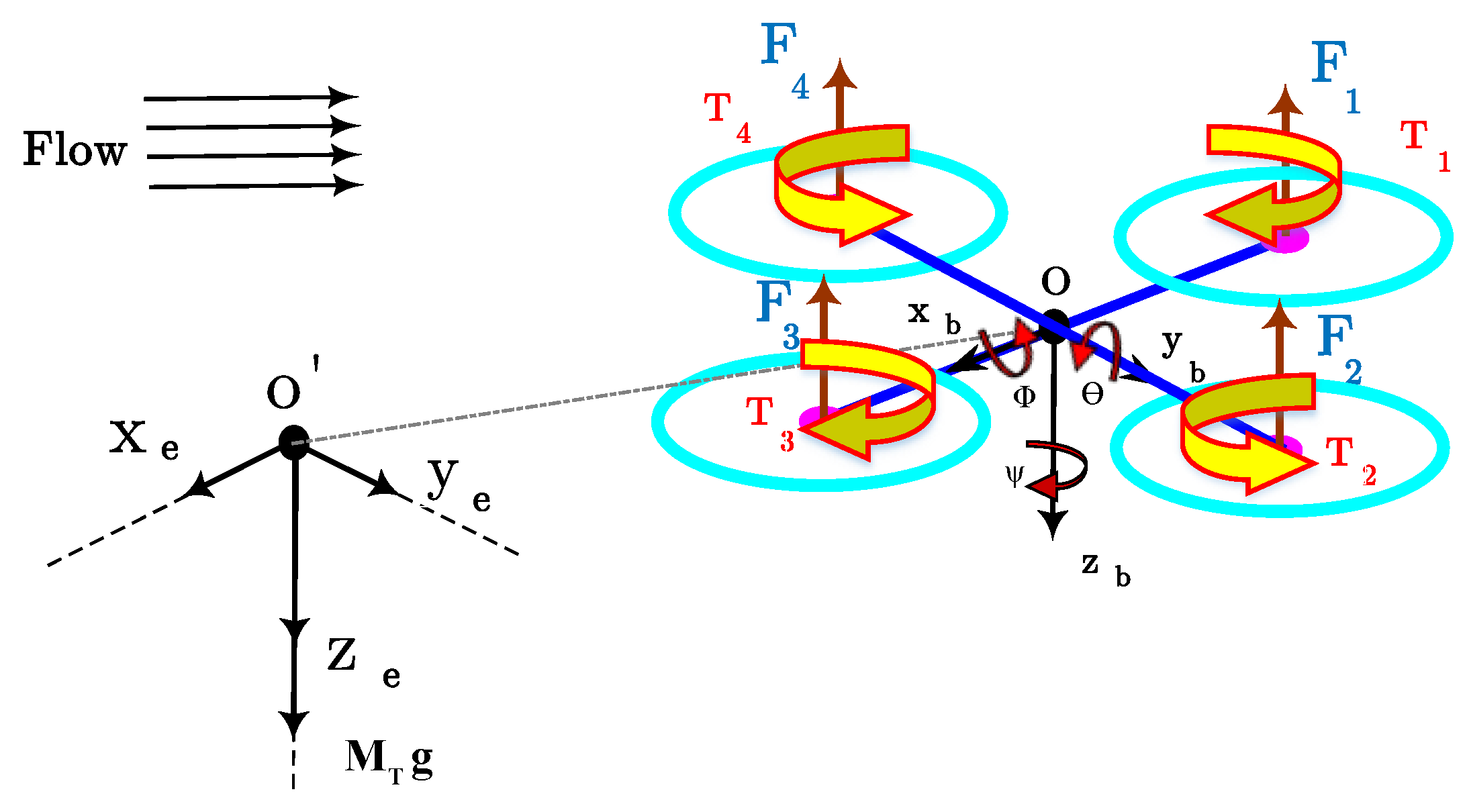
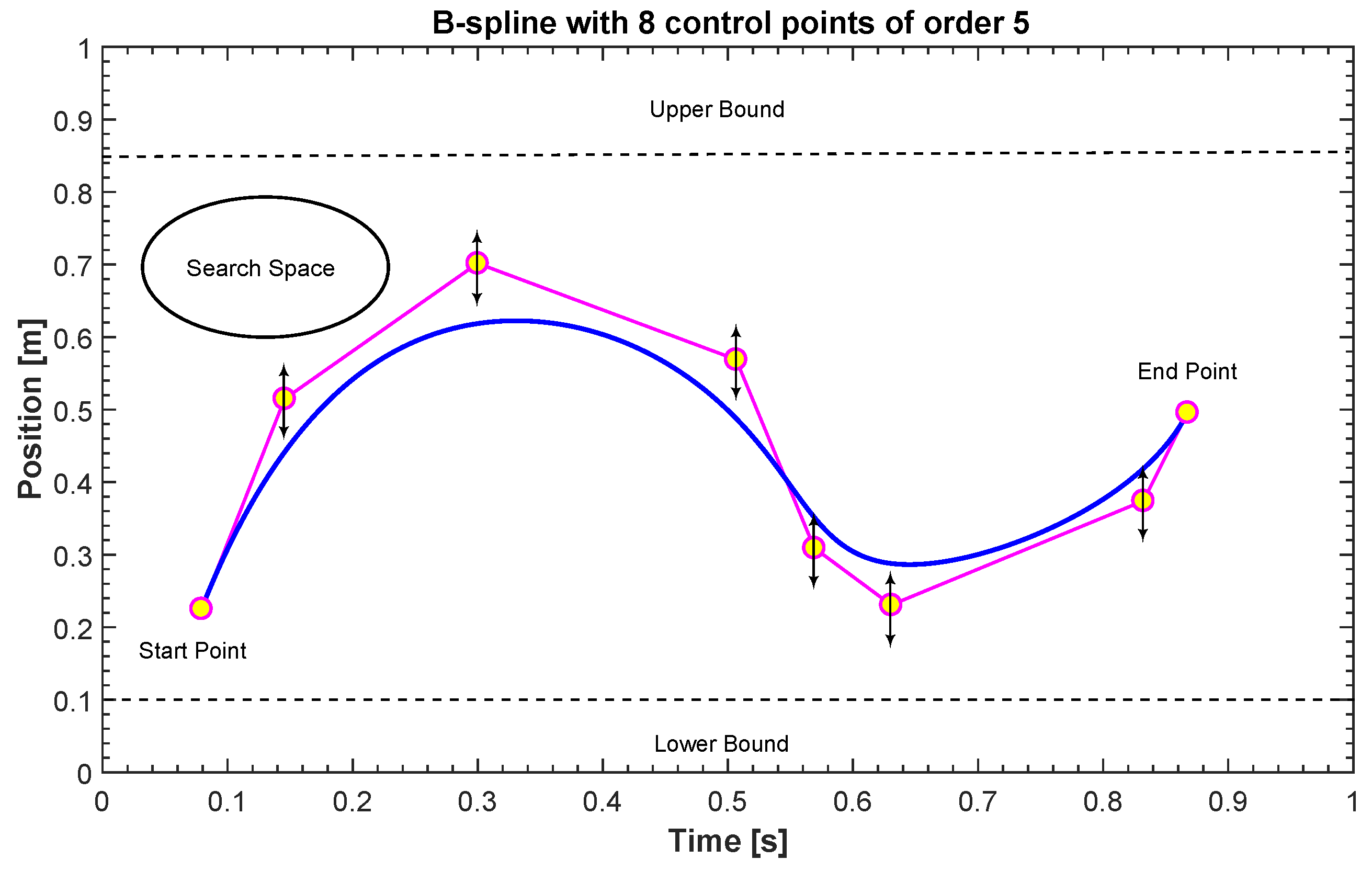
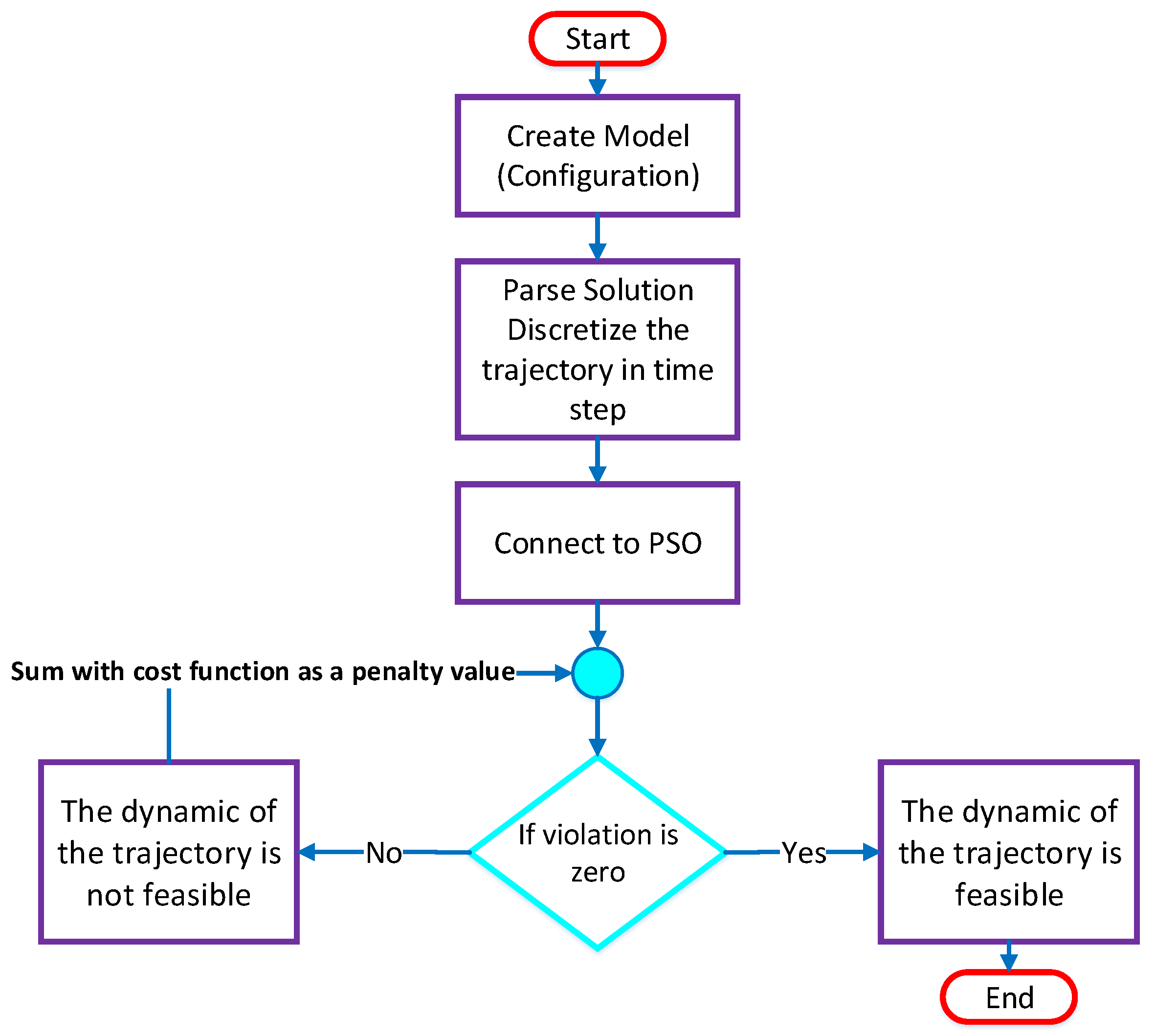
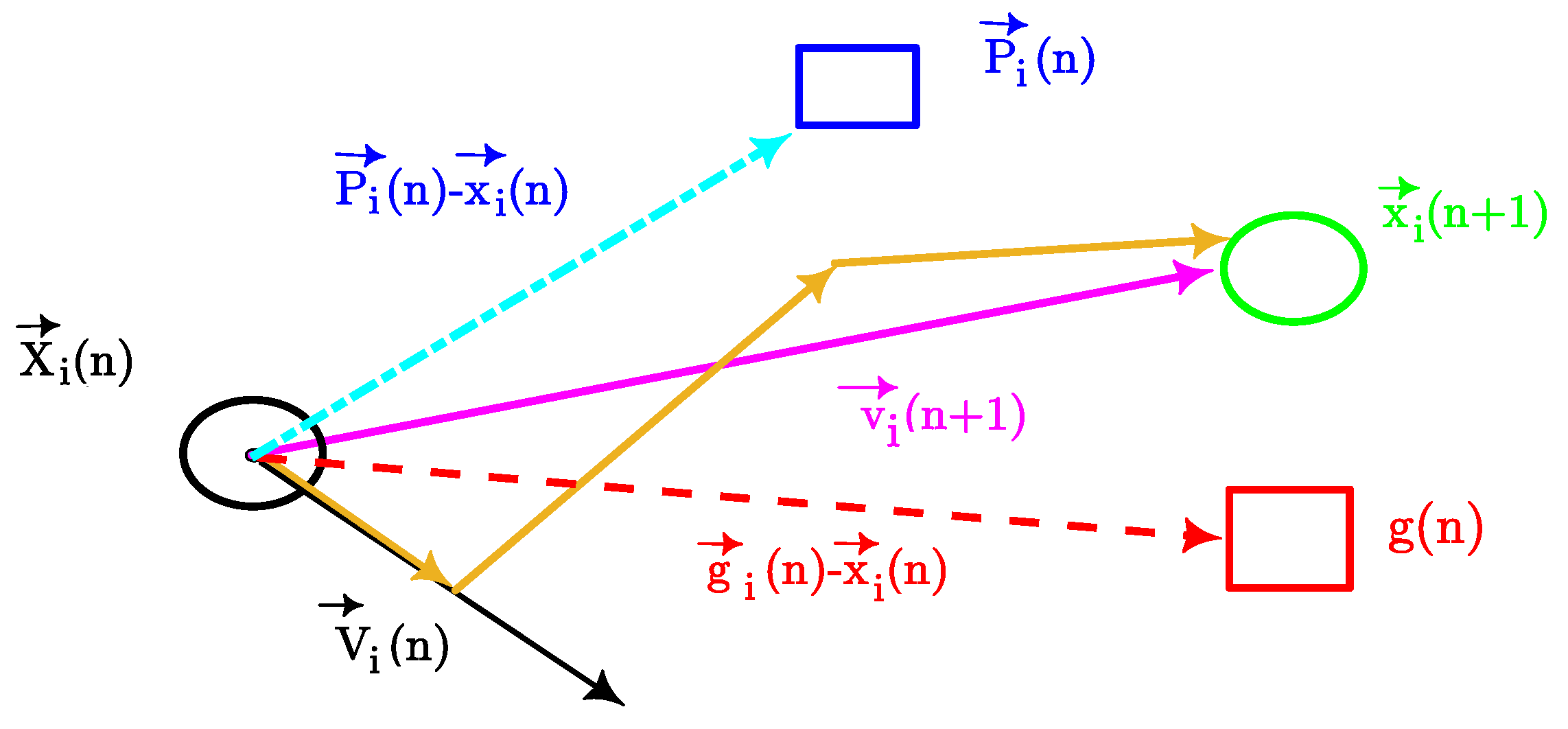


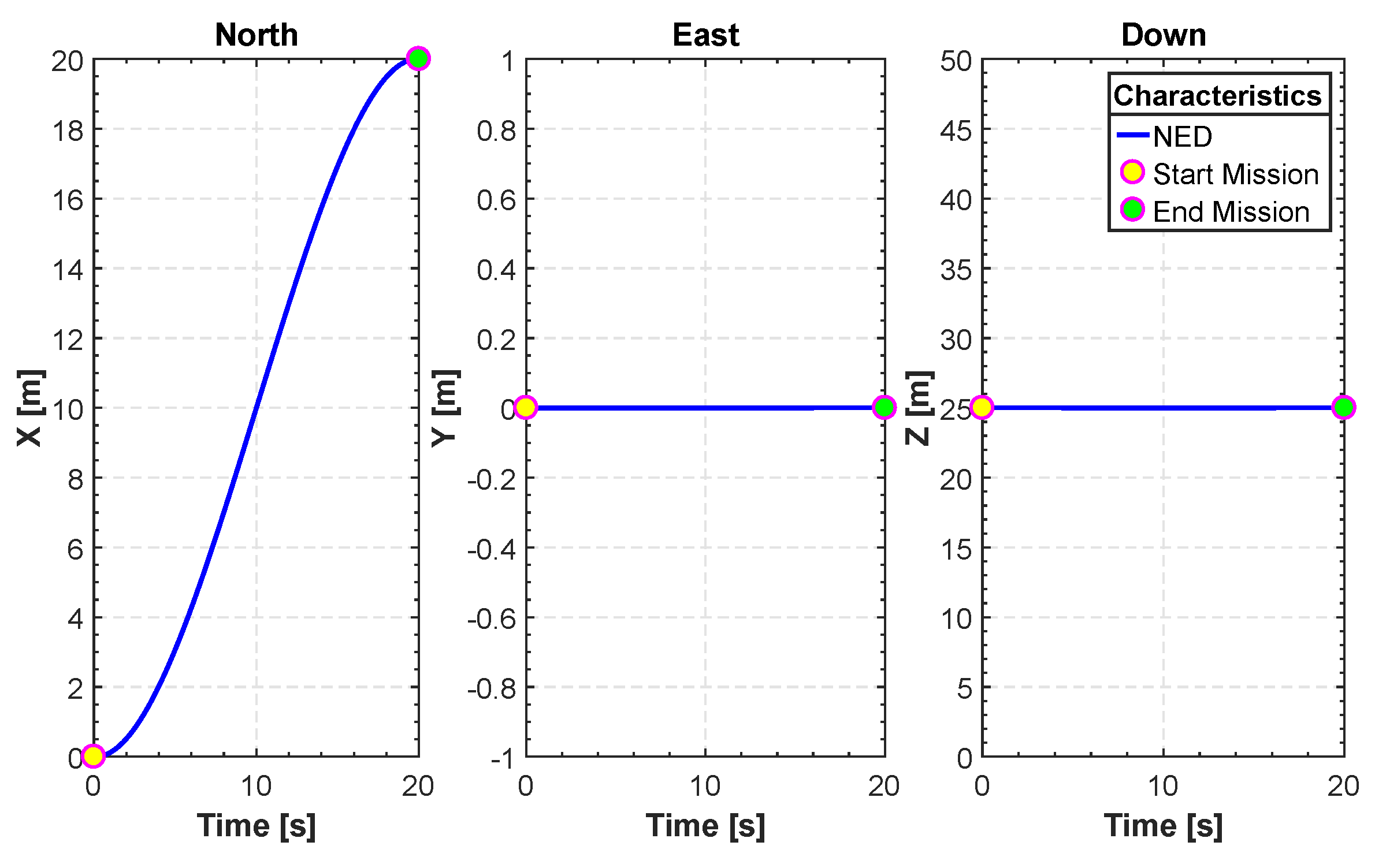
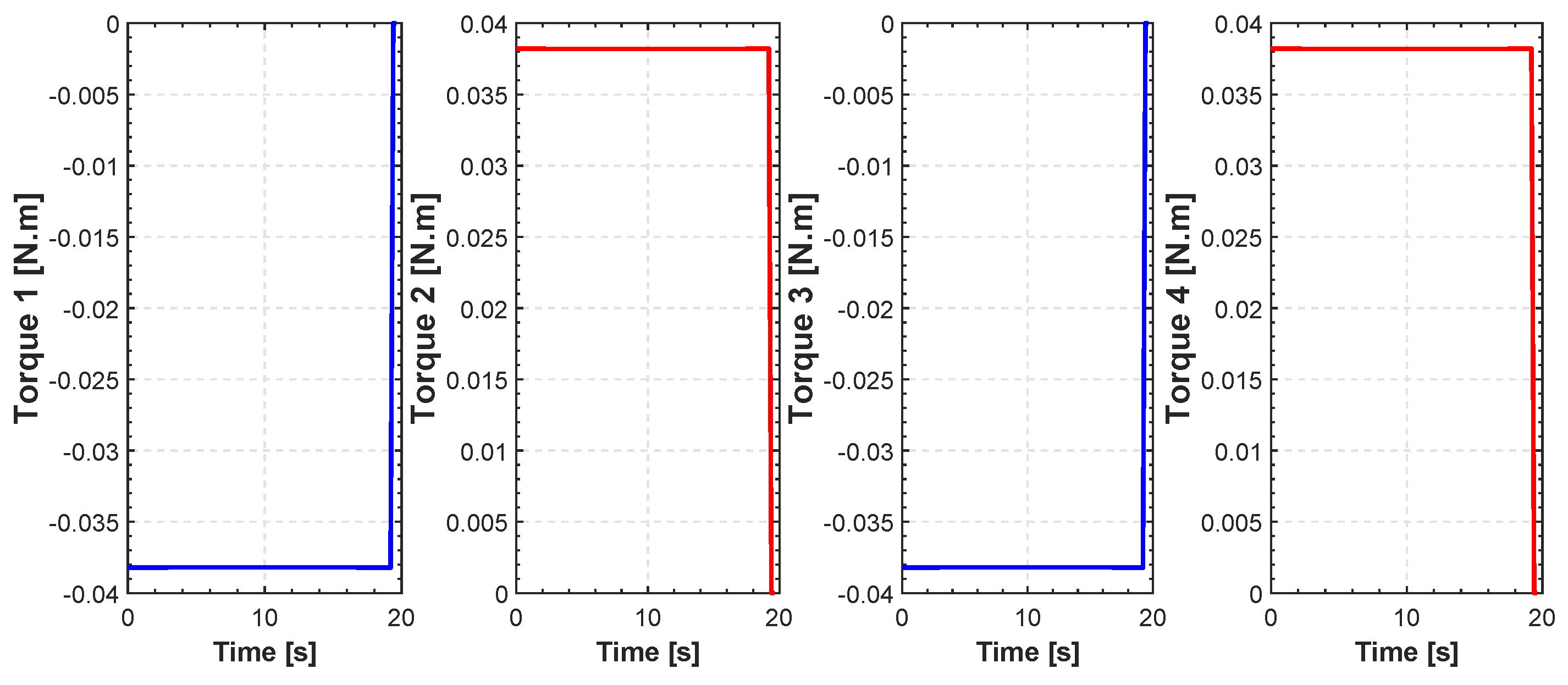

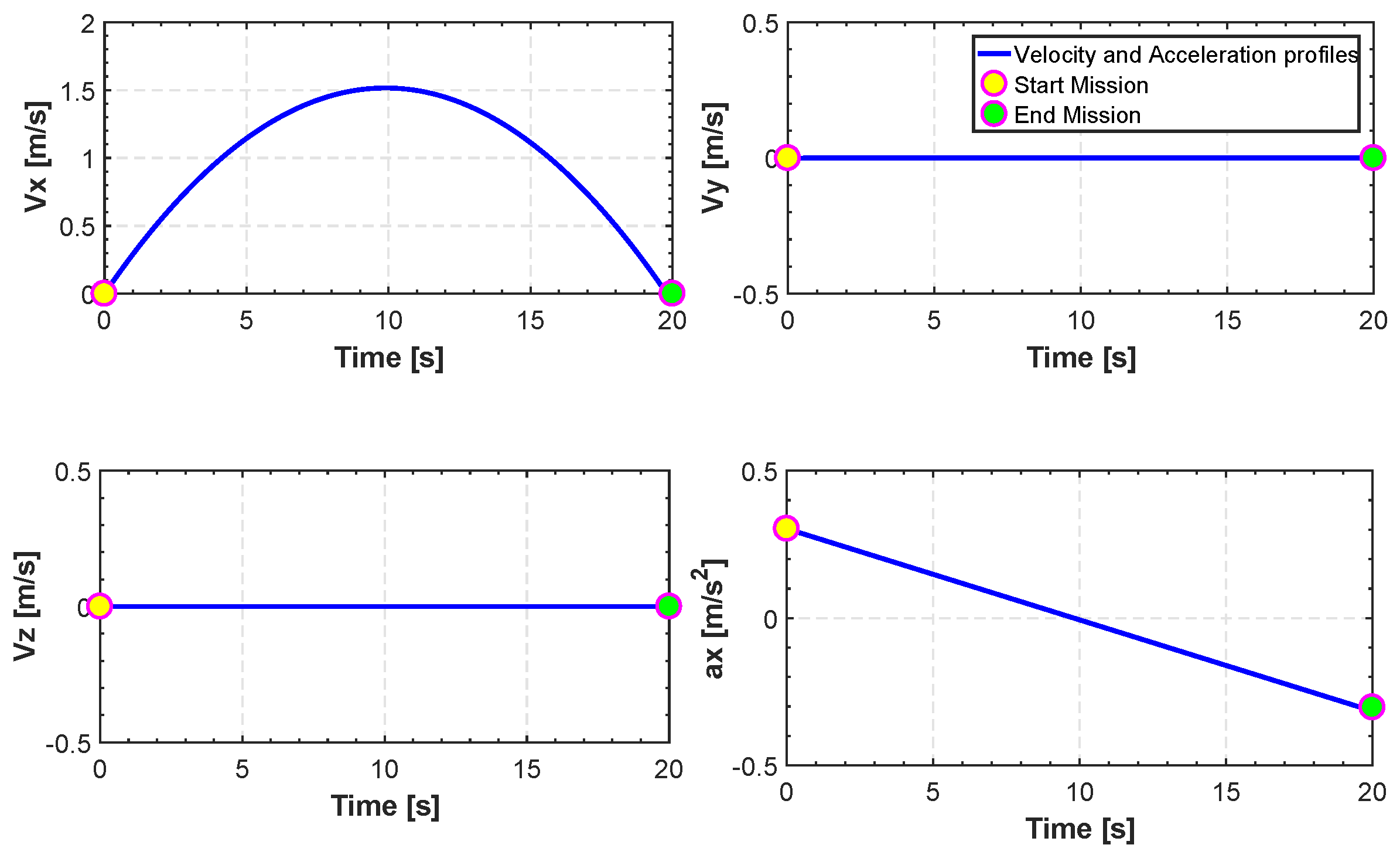

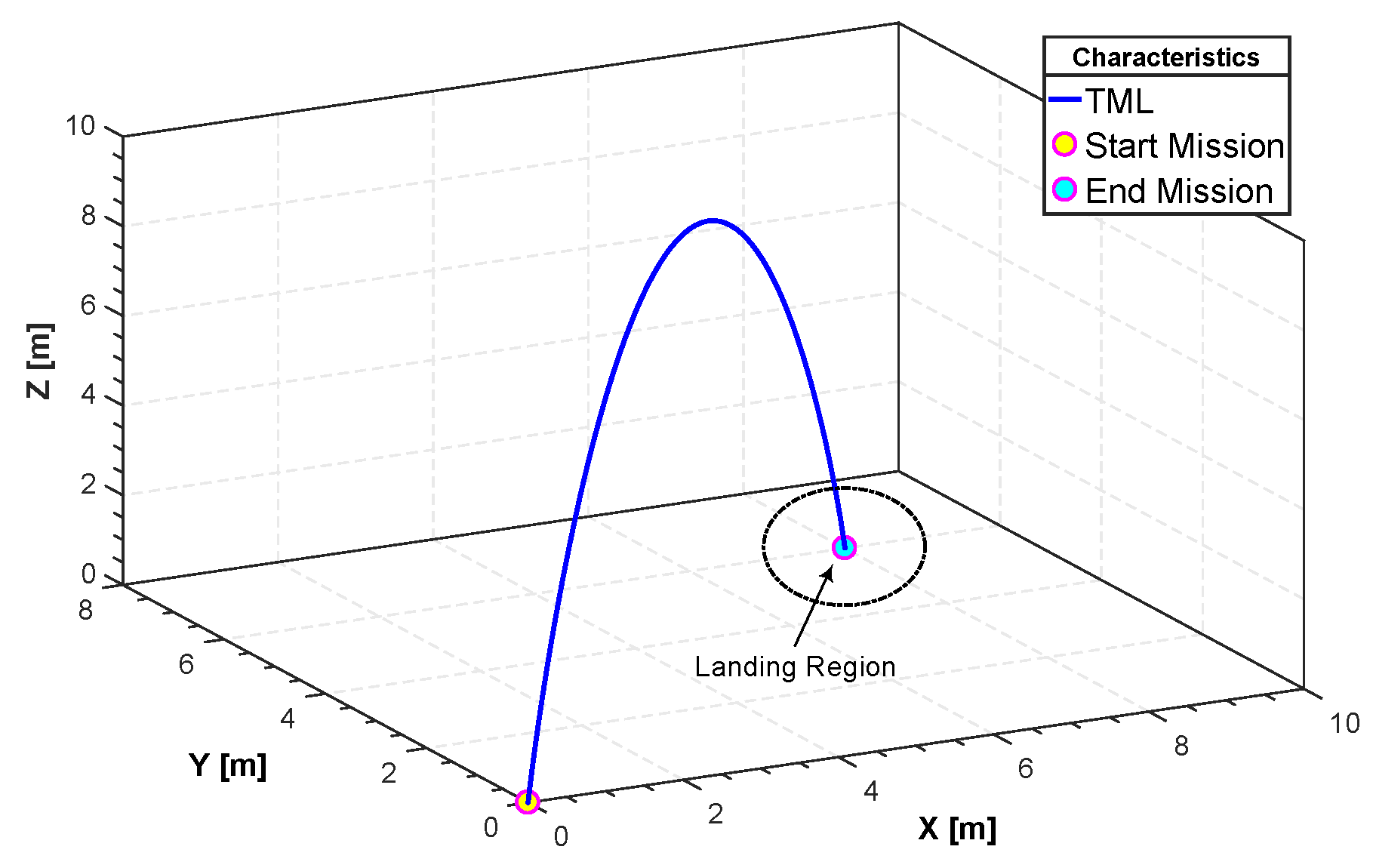
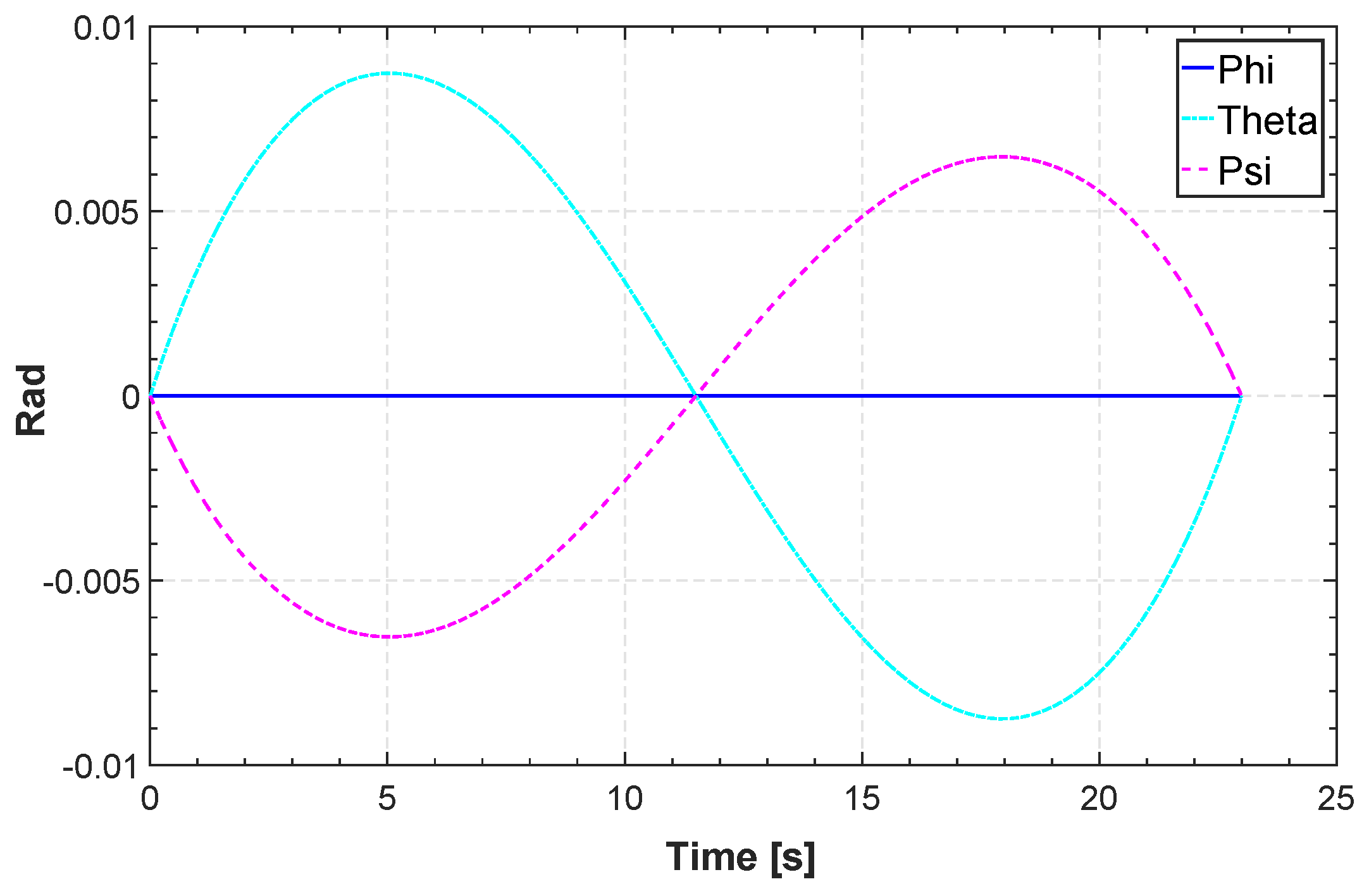

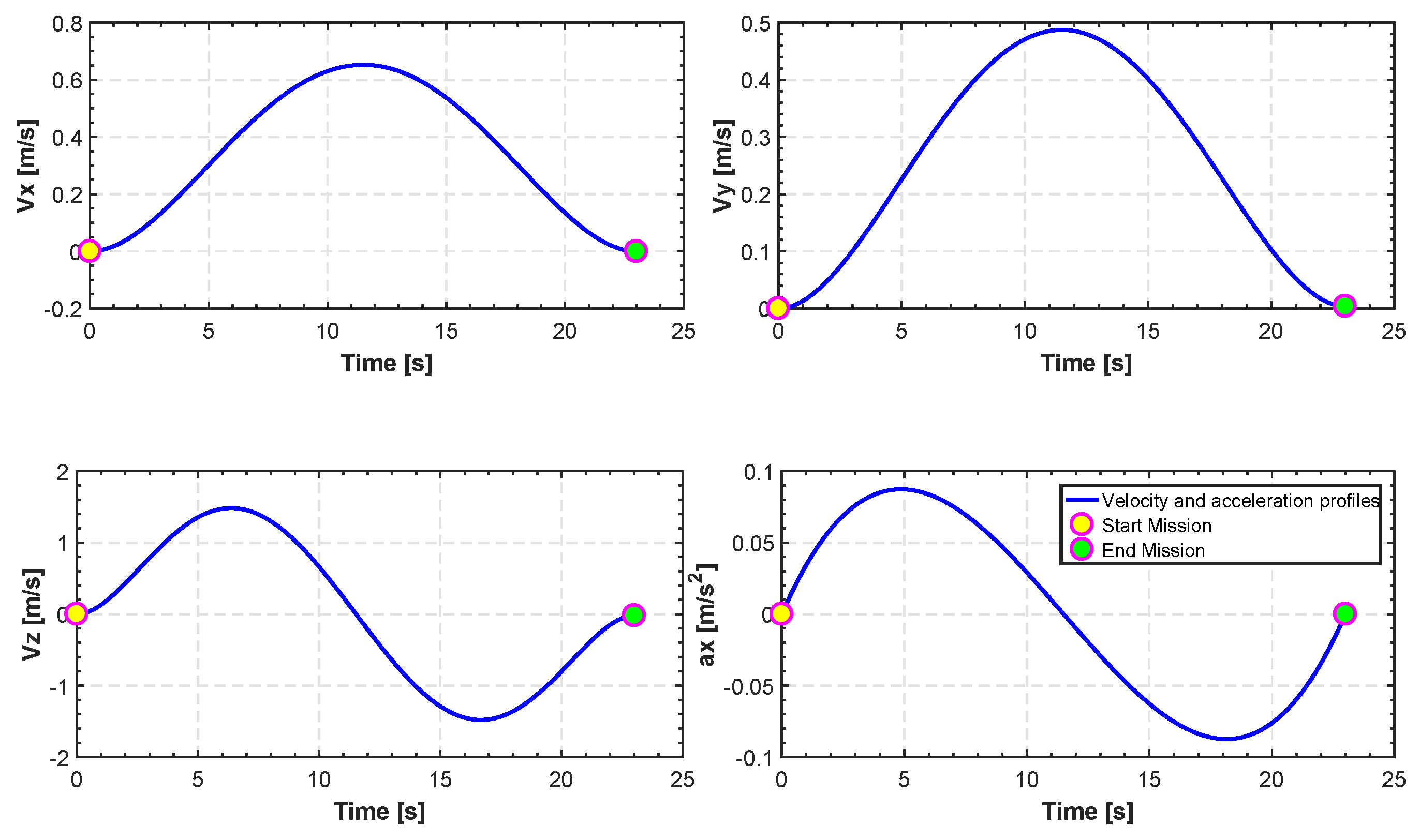
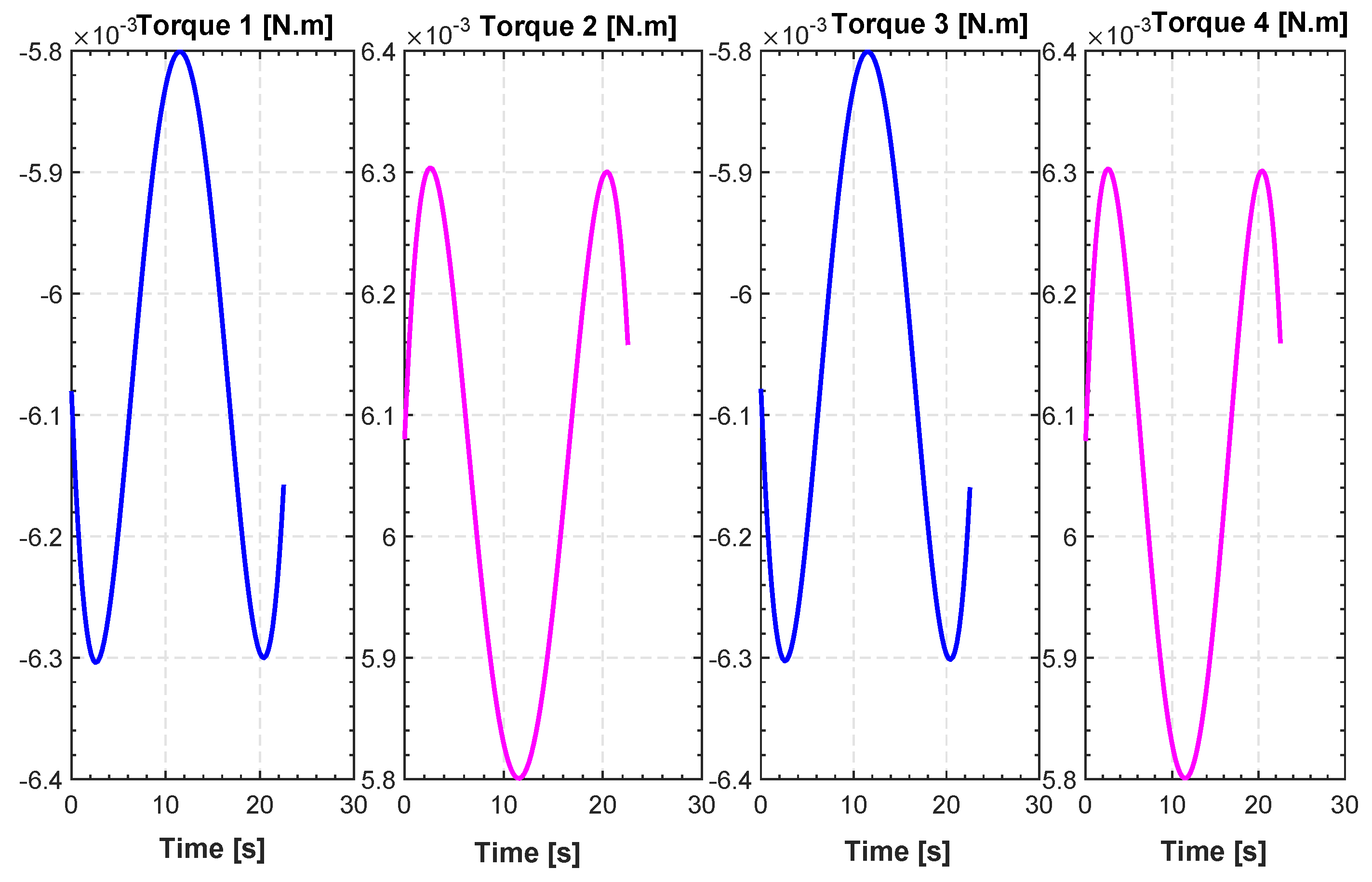
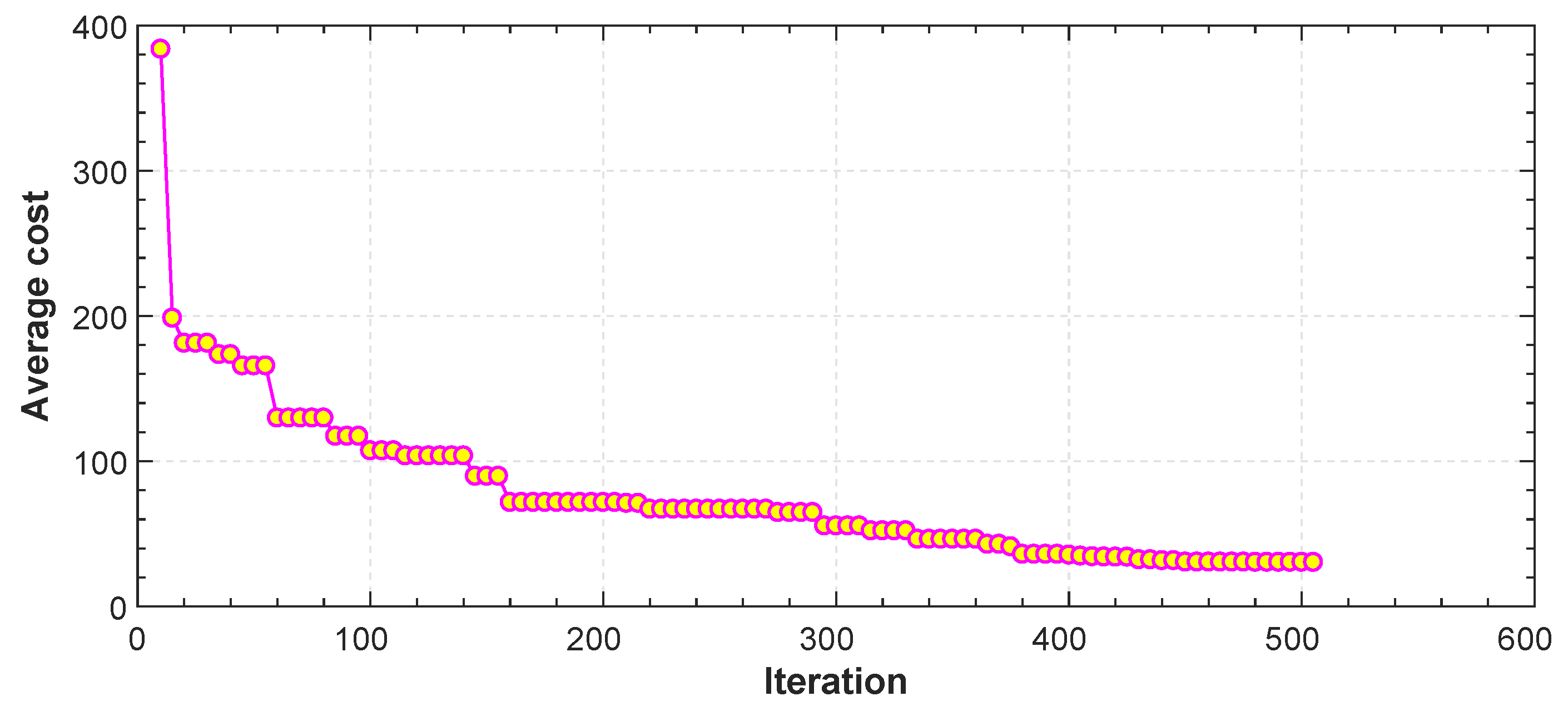

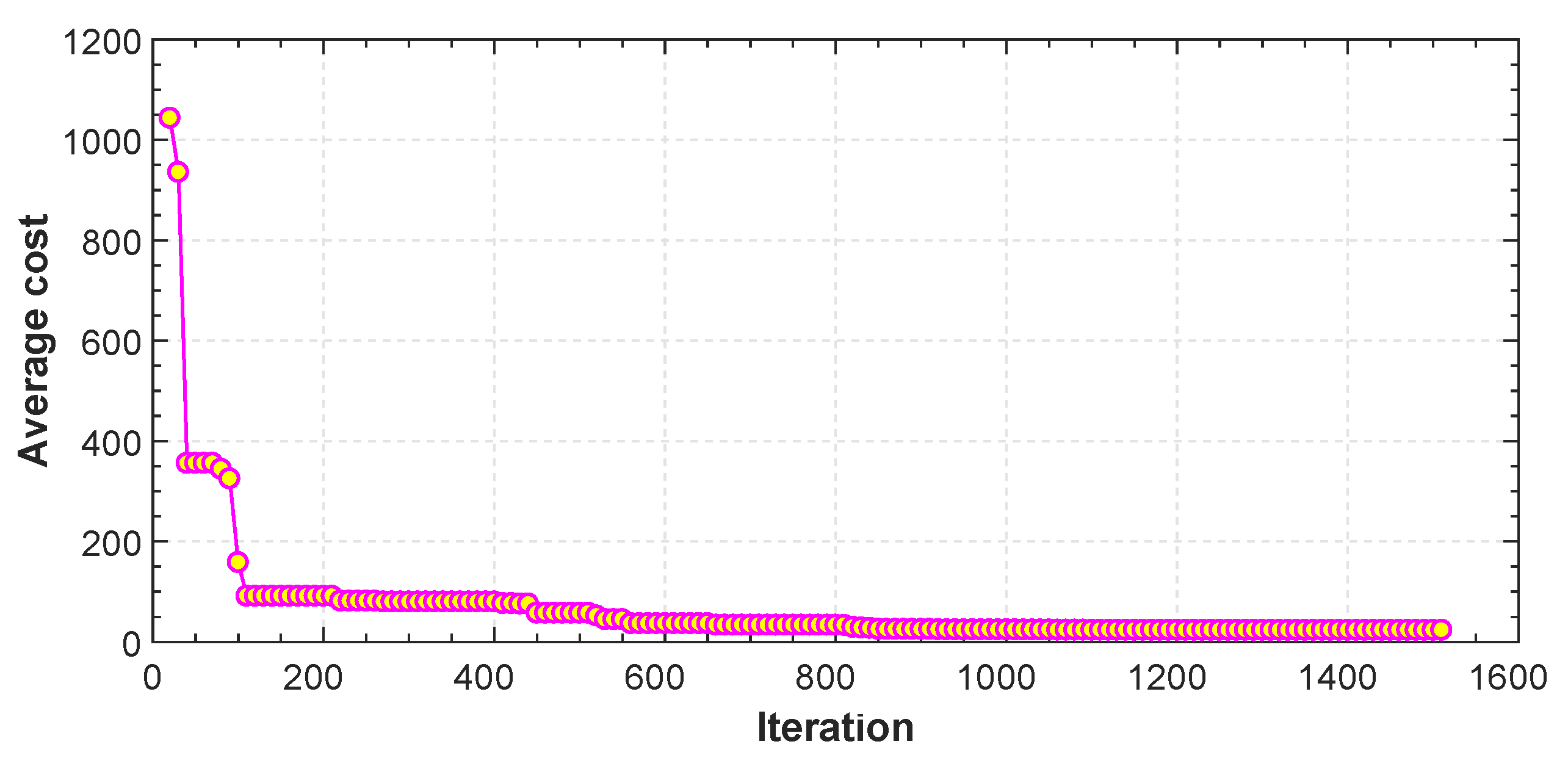


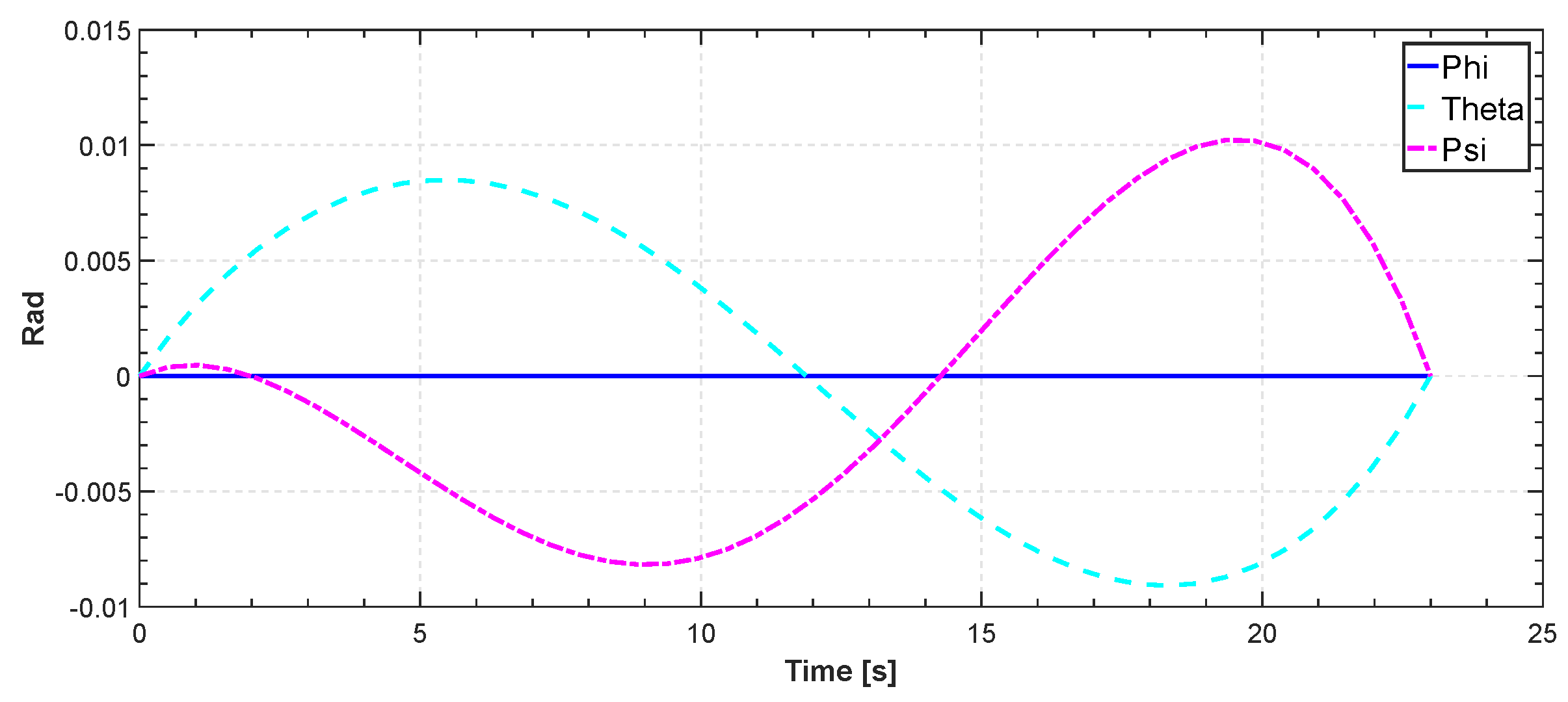

| Symbol | Definition |
|---|---|
| Earth axes | |
| NED | North east down |
| Body axes | |
| Roll angle | |
| Pitch angle | |
| Yaw angle | |
| Euler angles | |
| Rate of change of Euler angles | |
| Body angular rates | |
| Overall mass of the UAV | |
| Moment of inertia | |
| R | Radius of central sphere |
| g | Gravitational acceleration |
| Force generated by rotor | |
| Torque generated by rotor | |
| Angular velocity of rotor | |
| Control inputs |
| Symbol | Unit |
|---|---|
| 0.65 Kg | |
| l | 0.232 m |
| g | 9.806 m/s |
| R | m |
| Kg m | |
| Kg m | |
| Kg m | |
| b | Ns |
| d | Nms |
| Nm | |
| 0.1 Rad | |
| 0.1 Rad | |
| 0.1 Rad | |
| Inertia Weight () | 1 |
| 2 | |
| 2 |
| Scenarios | Control Points | Swarm Size | Iterations | Execution Time |
|---|---|---|---|---|
| Scenario 1 | 4 | 50 | 250 | 5.090549 (s) |
| Scenario 2 | 5 | 100 | 400 | 6.572763 (s) |
| Scenario 3 | 5 | 100 | 450 | 7.464875 (s) |
| Parameters | RRT* | A* | GA | PSO + B-Spline |
|---|---|---|---|---|
| Length (m) | 18.1265 | 16.5563 | 17.2111 | 14.2095 |
| Execution time (s) | 17.343599 | 0.02315 | 9.230695 | 1.544244 |
© 2017 by the authors. Licensee MDPI, Basel, Switzerland. This article is an open access article distributed under the terms and conditions of the Creative Commons Attribution (CC BY) license (http://creativecommons.org/licenses/by/4.0/).
Share and Cite
Salamat, B.; Tonello, A.M. Stochastic Trajectory Generation Using Particle Swarm Optimization for Quadrotor Unmanned Aerial Vehicles (UAVs). Aerospace 2017, 4, 27. https://doi.org/10.3390/aerospace4020027
Salamat B, Tonello AM. Stochastic Trajectory Generation Using Particle Swarm Optimization for Quadrotor Unmanned Aerial Vehicles (UAVs). Aerospace. 2017; 4(2):27. https://doi.org/10.3390/aerospace4020027
Chicago/Turabian StyleSalamat, Babak, and Andrea M. Tonello. 2017. "Stochastic Trajectory Generation Using Particle Swarm Optimization for Quadrotor Unmanned Aerial Vehicles (UAVs)" Aerospace 4, no. 2: 27. https://doi.org/10.3390/aerospace4020027






